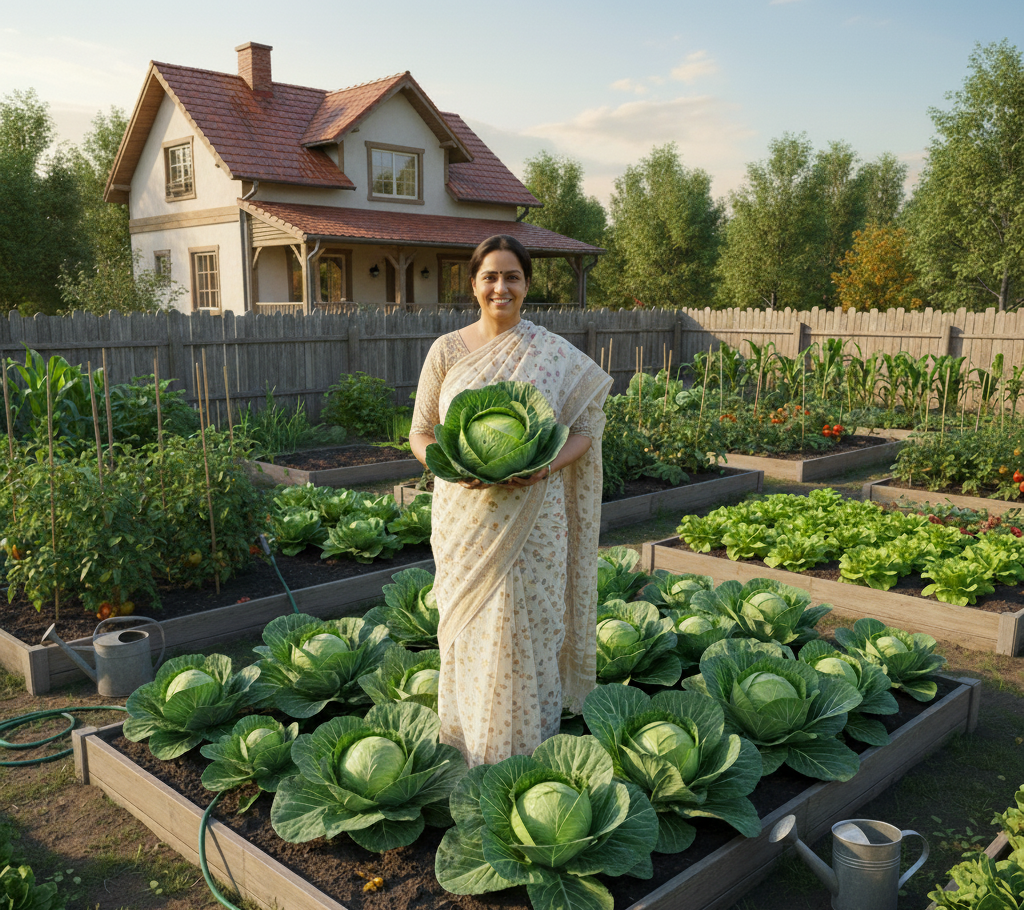How to Grow Cabbage at Home: Step-by-Step Guide for Beginners

Cabbage is a cool-season vegetable rich in vitamin C, vitamin K, and fiber. It is easy to cultivate in kitchen gardens and terrace planters with proper care. Learning how to grow cabbage at home ensures you enjoy fresh, chemical-free produce all winter.
Best Season to Grow Cabbage
Cabbage thrives in cool temperatures between 15°C and 25°C. In most regions of India, the ideal sowing period is October to February. Early sowing during these months allows the heads to mature before the onset of extreme summer heat.
Choosing the Right Soil

Cabbage prefers well-drained, fertile loamy soil rich in organic matter. The optimum soil pH ranges from 6.0 to 6.8. Before planting, loosen the soil and mix in well-decomposed compost or farmyard manure to enhance nutrient availability. Avoid waterlogged or compact soil, as it can cause root rot and poor head development.
Seed Sowing and Transplanting

Start seeds in a nursery tray or seedbed. Sow them 0.5 to 1 cm deep and keep the soil evenly moist. Germination usually occurs within 4 to 6 days.
When seedlings reach 10–12 cm in height and have 4–5 true leaves (around 3–4 weeks old), they are ready for transplanting. Transplant each seedling at a spacing of 45 cm between plants and 60 cm between rows. Ensure each plant is set deep enough to support the stem but not buried above the first leaves.
Watering and Fertilization

Cabbage has shallow roots and requires consistent soil moisture. Water regularly to prevent drying, especially during head formation, but avoid overwatering. Mulching around the base helps retain moisture and control weeds.
For best results, apply organic fertilizer or compost tea every 15–20 days. During the growing stage, nitrogen-rich feed supports leaf growth, while potassium and phosphorus aid head formation. Avoid excessive nitrogen once heads start forming to prevent loose, leafy heads.
Pest and Disease Control
Common cabbage pests include aphids, caterpillars, and cabbage worms. To manage them organically, use neem oil spray or a solution of garlic and soap water once a week. For fungal diseases like black rot or damping-off, maintain good spacing and avoid overhead watering. Crop rotation each season helps reduce soil-borne pathogens.
Harvesting Cabbage

Cabbage heads are ready for harvest about 75–90 days after transplanting, depending on the variety. The heads should be firm, compact, and full-sized. Cut the head from the base using a sharp knife, leaving outer leaves and roots to promote secondary shoots.
Storage and Post-Harvest Tips
After harvesting, remove damaged outer leaves and wash gently. Store the cabbage in a cool, dry place or refrigerate at 0–4°C with high humidity to maintain freshness for up to two weeks.
Final Thoughts
Growing cabbage at home is simple and highly rewarding. With the right soil, proper watering, and timely pest management, you can enjoy fresh, healthy, and pesticide-free cabbage from your own garden. Start planting this winter and experience the satisfaction of home-grown goodness.

Green Paradise encourages every home gardener to go green and grow their own vegetables — because a healthier planet begins with your garden.

